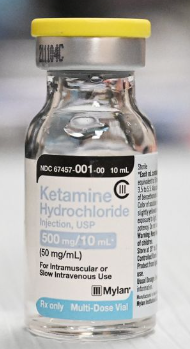Ketamine, originally developed in the 1960s as an anesthetic for medical use, has evolved far beyond its initial purpose. Its journey from an operating room staple to a subject of psychiatric research and recreational use showcases the complex nature and multifaceted applications of this substance. This article delves into ketamine’s history, medical applications, mechanisms of action, recreational use, and the emerging research on its potential in treating mental health disorders.
History and Development
Ketamine was synthesized for the first time in 1962 by Calvin Stevens, a chemist at Parke-Davis, as part of an effort to find a safer anesthetic alternative to phencyclidine (PCP). Its unique properties quickly made it a popular choice in human and veterinary medicine. By the late 1960s, it was approved for use in the United States, praised for its safety profile and the minimal respiratory depression it induced compared to other anesthetics.
Medical Applications
In the medical field, ketamine is used primarily as an anesthetic in emergency situations, surgeries, and pain management. It’s especially favored for its rapid onset and the ability to maintain airway reflexes, heart function, and blood pressure. Beyond anesthesia, ketamine has shown promise in treating chronic pain, especially in conditions like complex regional pain syndrome (CRPS), and has been used off-label for acute pain management in emergency departments.
Mechanisms of Action
Ketamine’s effects are attributed to its action as an N-methyl-D-aspartate (NMDA) receptor antagonist. By blocking these receptors, ketamine disrupts the neurotransmitter glutamate’s pathway, which plays a significant role in pain perception, depression, and the formation of memories. This action is believed to contribute to its analgesic properties and its potential effects on mood and thought processes.
Recreational Use and Concerns
Recreationally, ketamine is used for its dissociative and hallucinogenic effects. It can induce a state known as the “K-hole,” characterized by a profound dissociative experience that some users find desirable. However, recreational use carries significant risks, including cognitive impairment, urinary tract issues, and addiction. Its legal status varies by country, but it is often regulated under drug control laws due to its potential for abuse and dependence.
Psychiatric Research and Emerging Therapies
Perhaps most notably, recent years have seen a surge in interest regarding ketamine’s potential as a rapid-acting antidepressant. Several studies suggest that low doses can produce quick and significant reductions in depressive symptoms, even in individuals who have not responded to traditional antidepressants. This has led to the FDA approval of esketamine (a ketamine isomer) nasal spray for treatment-resistant depression. Ongoing research is exploring its use in treating other mental health disorders, including anxiety, post-traumatic stress disorder (PTSD), and addiction.
Conclusion
Ketamine’s journey from an anesthetic to a potential breakthrough in psychiatric treatment underscores the complexity of this compound. While its recreational use poses significant risks, its medical applications, from pain management to mental health treatment, highlight the importance of ongoing research and cautious optimism. As we continue to explore ketamine’s full potential, it is crucial to balance its benefits against its risks, ensuring it is used safely and effectively across its various applications.
